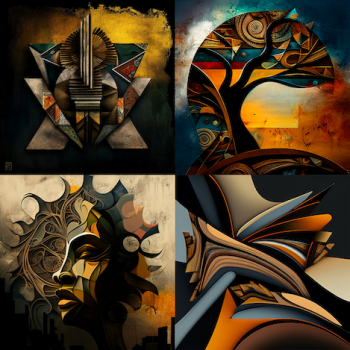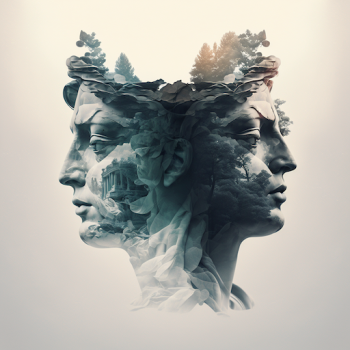Exploring the profound impact of art on our emotional experiences and well-being

Introduction
Art has the unique ability to evoke a wide range of emotions, from awe and joy to sadness and introspection.
As a form of human expression, art taps into our innermost thoughts, feelings, and experiences, creating a deep and lasting connection between the artist and the audience.
Today we explore the relationship between art and human emotions, examining how various art forms elicit emotional responses and contribute to our emotional well-being.
The Emotional Power of Art
- Visual Arts: Painting, Sculpture, and Photography
Visual arts, such as painting, sculpture, and photography, have the power to evoke strong emotional responses.
Through the use of color, form, texture, and composition, artists can convey complex emotions, ideas, and stories, inviting the viewer to engage with the artwork on a deeply emotional level.
For example, the vibrant colors and expressive brushstrokes of Vincent van Gogh’s “Starry Night” can evoke a sense of wonder and awe, while the haunting imagery of Francisco Goya’s “The Third of May 1808” can elicit feelings of shock and empathy.
- Performing Arts: Music, Dance, and Theater
The performing arts, including music, dance, and theater, also have a profound impact on our emotions.
Music, in particular, has long been recognized for its ability to elicit a wide range of emotions, from joy and happiness to sadness and nostalgia.
Dance and theater, through movement and storytelling, can similarly evoke strong emotional responses, connecting audiences with the performers and the narratives they convey.
- Literature and Poetry
Literature and poetry offer yet another avenue for exploring the emotional power of art.
Through carefully chosen words, imagery, and narrative, authors and poets can elicit a wide range of emotions, transporting readers to different worlds and allowing them to connect with the characters and experiences depicted in the text.
Art and Emotional Well-Being
- Emotional Expression and Catharsis
One of the key benefits of art is its ability to provide an outlet for emotional expression and catharsis.
Both artists and audiences can use art as a means of processing and releasing emotions, leading to a greater sense of emotional balance and well-being.
For example, creating or viewing a painting that captures a particular emotion can help individuals better understand and manage their feelings.
- Empathy and Connection
Art also fosters empathy and connection by allowing us to experience the emotions and perspectives of others.
Through the shared experience of engaging with art, individuals can develop a deeper understanding of and connection with others, promoting emotional well-being and a sense of belonging.
- Emotional Resilience and Personal Growth
Lastly, art can contribute to emotional resilience and personal growth by encouraging self-reflection and exploration.
Engaging with art can help individuals confront and process difficult emotions and experiences, leading to increased emotional resilience and a greater understanding of themselves and the world around them.
Conclusion
Art and human emotions are inextricably linked, with art serving as both a powerful catalyst for emotional expression and a means of fostering emotional well-being.
By engaging with various art forms, we can better understand our own emotions, empathize with the experiences of others, and cultivate emotional resilience and personal growth.
As we continue to explore the profound impact of art on our emotional lives, let us remember to embrace the power of art as a tool for emotional expression, connection, and healing.













